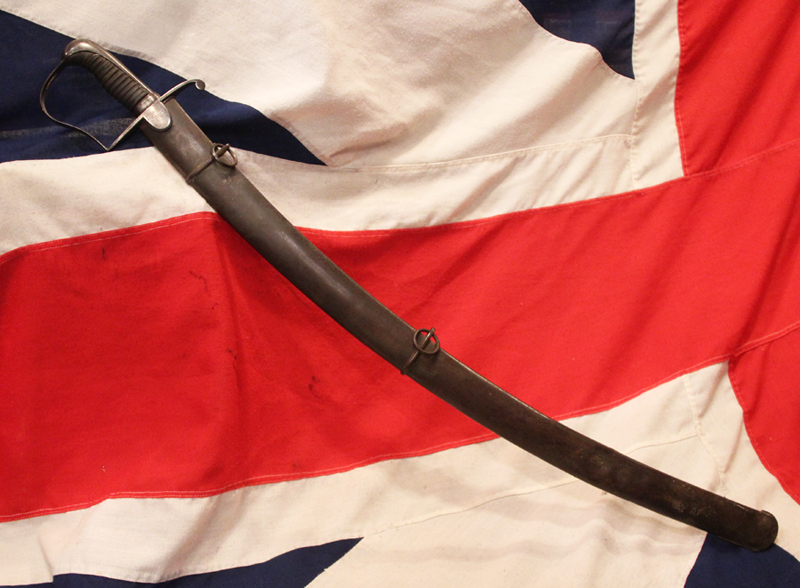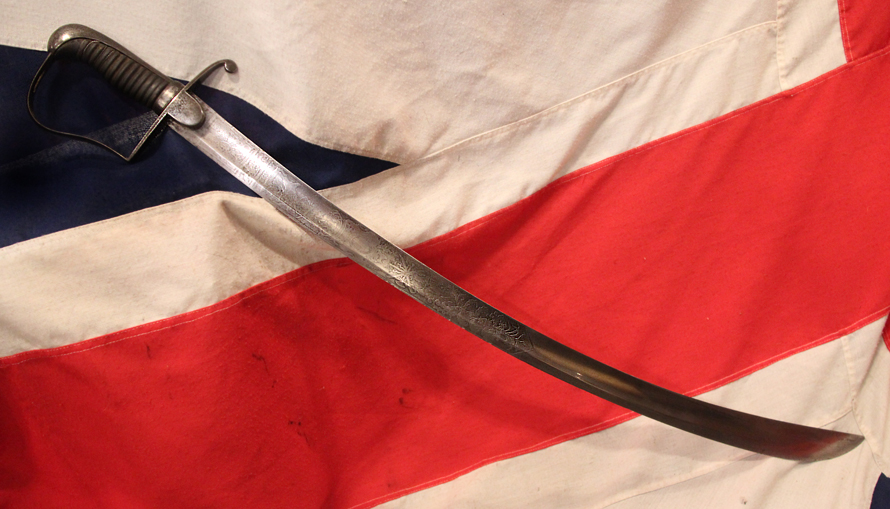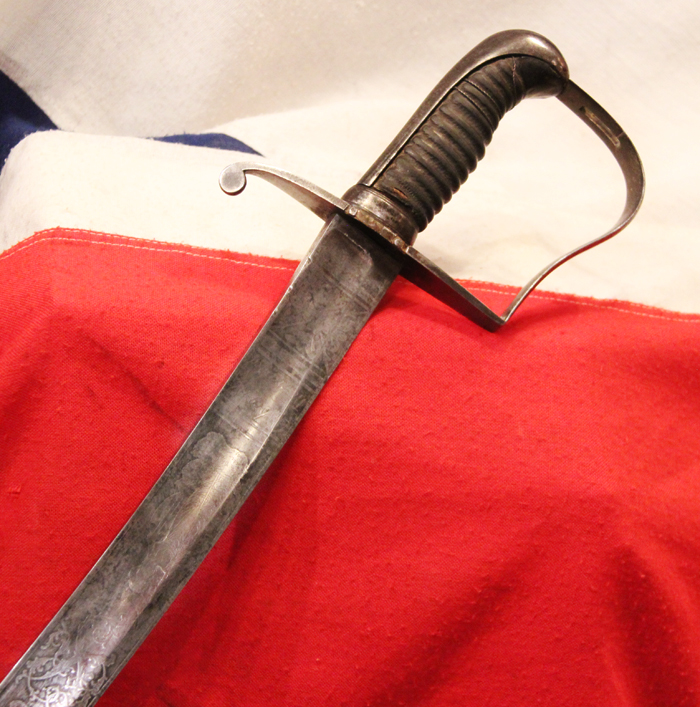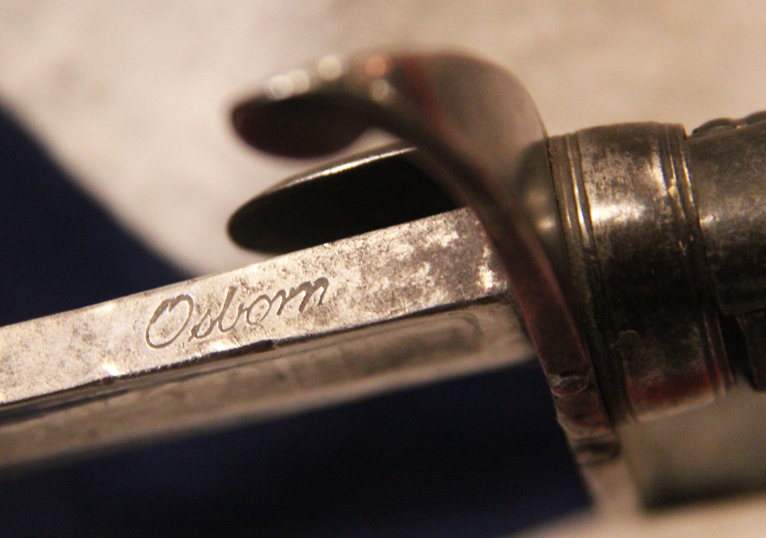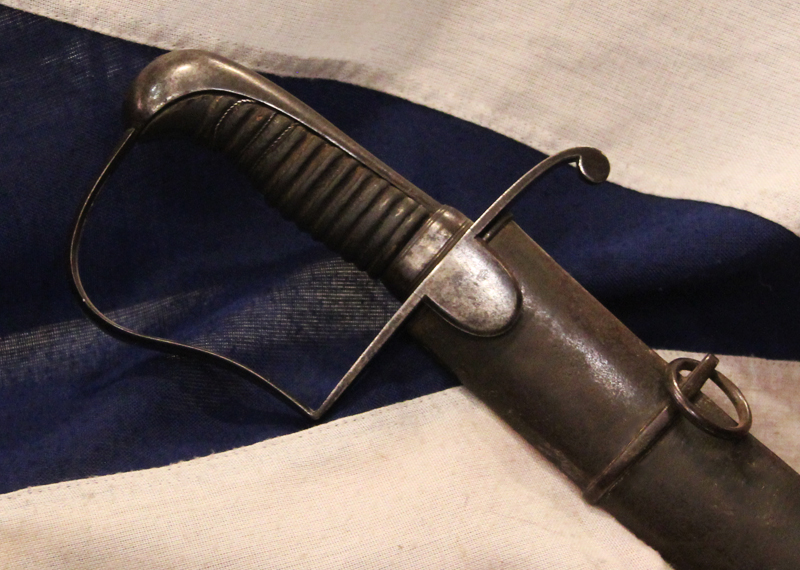A Fabulous, Earliest 1796 Pattern Light Dragoon Officer's Sword, With a Fully Deluxe Etched Blade, Made by The First Maker And Co-Designer of the 1796 Light Dragoon Sabre
One of the best 1796 light dragoon officers swords, with its last use at Waterloo, you will ever likely to see.
Also of the ground breaking Osborn-Le Marchant collaboration sabres, an earliest 1796 manufactured original example, that resulted from their partnership, to create the most effective, successful, and indeed feared, cavalry swords ever made. It is certainly near identical to Le Marchant’s own personal sword made in the Osborn bespoke sword workshop. The quality and beauty of the blade is simply breathtaking, and this sword may well be one of the very earliest swords that Le Marchant supervised during in its creation by Osborn’s workshop. Used through the entire Napoleonic Wars period right up to the Battle of Waterloo. In good condition for age with wonderful fully etched deluxe etching to the blade, with the pre 1801 royal coat of arms, royal cyphers of King George IIIrd, stands of arms and a depiction of a sabre wielding cavalry officer on horseback, which in all likelihood may be representation of Le Marchant himself. The 1796 Light Dragoon sabre was designed by British cavalry regiment commander Col. John Le Marchant and Henry Osborn, a Birmingham cutler, in an inspired collaboration to create the ultimate cavalry sword. In fact it was so successful that during the Napoleonic Wars the French government petitioned and pleaded with the British to stop using such a vicious weapon, as it inflicted such awful injuries against their French cavalrymen. See in the gallery a painting of Le Marchant with his identical earliest Osborn made 1796 Light Dragoon sabre. A fabulous and sprauncy sabre used to devastating effect against Napoleon's cavalry. This is one of those earliest Osborn made sabres made in 1795-6. Le Marchant served as a brigade major during the disastrous Low Countries campaign of 1793-95, and for a time had command of his regiment as the most senior officer present. His practical experience in the field brought to Le Marchant's attention the many deficiencies of equipment and training the British cavalry suffered from. He was impressed by the Austrian cavalry who were operating alongside the British, and was particularly struck by the disparaging remark of an Austrian officer who thought that the British swordsmanship was "most entertaining" but reminded him of "someone chopping wood".
On his return to Britain he exerted himself to improve the equipment and combat training of the British cavalry. In 1795-6 he designed, in collaboration with the Birmingham sword cutler Henry Osborn, a new cavalry sabre, which was adopted for the light cavalry. In 1796 his treatise of instruction in mounted swordsmanship was adopted by the army as part of its official regulations (The Rules and Regulations of the Sword Exercise of the Cavalry). The sword exercise became quite celebrated, the elderly king, George III, became familiar with it, and country lanes abounded with small boys practising the cuts with sticks. Le Marchant toured Britain teaching cadres, drawn from both regular and yeomanry cavalry units, his system of swordsmanship; his methods were practical and painstaking and he was himself a superb mounted swordsman. Le Marchant was also to have gone to Ireland to teach his sword exercise there but was prevented from doing so, his brother-in-law, Lt. Peter Carey (16th Light Dragoons), undertook this duty in his stead. Le Marchant attained the rank of lieutenant-colonel in 1797. His promotion was at the direct behest of the king (Le Marchant lacked the family influence and wealth which was normally necessary for advances in rank), with whom Le Marchant had developed a friendly relationship.
After his promotion he served as second-in-command of the 7th Light Dragoons which Henry, Lord Paget commanded. Paget, as the Earl of Uxbridge, was later to command the Anglo-allied cavalry at the Battle of Waterloo. Though a good relationship existed between himself and Paget, Le Marchant found it difficult to keep company with the immensely wealthy and fashionable peer. He therefore transferred to his old regiment the 2nd Dragoon Guards (Queen's Bays), becoming the regimental commander. One lancet removed.
Code: 22467

